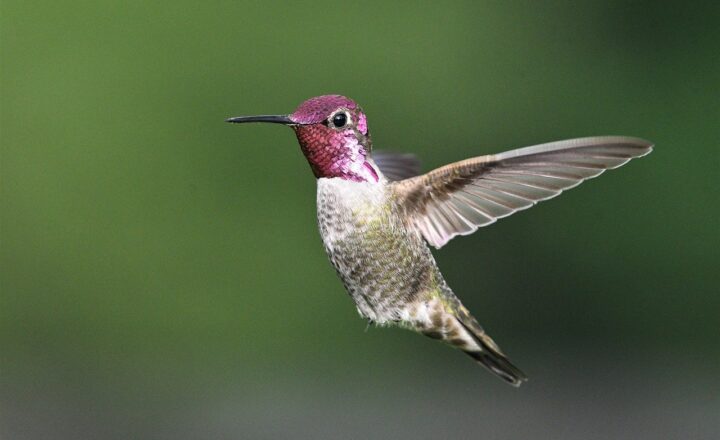The Fascinating Relationships Between Animals: Nature’s Social Network
November 19, 2024

The natural world is a captivating tapestry of interactions between species, each thread intricately woven to create a complex social network. Animals display a remarkable variety of behaviors that facilitate cooperation, competition, and communication within and between species. These relationships not only contribute to the survival of individual species but also maintain the delicate balance of ecosystems. In this exploration, we will delve into the fascinating relationships between animals, focusing on the methods of social interaction, the benefits of these connections, and how they reshape our understanding of animal behavior.
1. Types of Animal Relationships
Animal relationships can be categorized into several types, each exhibiting unique characteristics and dynamics. Understanding these relationships is essential for appreciating the complexity of animal societies.
- Symbiosis: This term encompasses a variety of interactions where two species live closely together. Symbiosis can be mutualistic (both species benefit), commensalistic (one benefits while the other is neither helped nor harmed), or parasitic (one benefits at the other’s expense). An example of mutualism is the relationship between clownfish and sea anemones, where clownfish receive protection, and the anemones benefit from the nutrients provided by the clownfish’s waste.
- Cooperation: Many species, including wolves, elephants, and primates, engage in cooperative behaviors that enhance their chances of survival. Cooperation can include hunting in packs, raising young collectively, or defending the group against predators. These social bonds foster a sense of community and enhance the resilience of the group.
- Competition: Animals often compete for resources like food, territory, and mates. This competition can lead to aggression but can also drive evolutionary changes as species adapt to outcompete their rivals. An example is the competition between male deer during the mating season, where they engage in antler clashes to establish dominance and attract females.
- Communication: Animals use various means to communicate with each other, from vocalizations and body language to chemical signals. This communication is crucial for establishing social hierarchies, warning of danger, and coordinating group activities. For instance, dolphins use a series of clicks and whistles to convey complex information and maintain social bonds within their pods.
Understanding these types of relationships allows us to appreciate the diverse ways in which animals interact and adapt to their environments.
2. The Importance of Social Connections in Animal Behavior
Social relationships among animals provide several significant advantages that enhance their survival and reproductive success.
- Protection from Predators: Living in groups can provide safety in numbers. For example, schools of fish can confuse predators with their collective movement, reducing individual risk. Similarly, herding animals, like wildebeests, can use group dynamics and vigilance to detect predators earlier than solitary individuals.
- Resource Acquisition: Cooperation among animals can lead to greater success in securing food. For instance, African lions hunt in prides where they coordinate their efforts to take down larger prey than any single lion could achieve alone. This collective hunting strategy increases their chances of having enough food for the group, thus supporting the survival of all members, including young cubs.
- Learning and Knowledge Sharing: Animals often learn from one another, passing down behaviors and survival strategies within their social groups. For example, chimpanzees are known to share tool-use techniques among family members, allowing for more efficient foraging. This cultural transmission ensures that valuable knowledge persists through generations, which is vital for adapting to changing environments.
- Raising Offspring: In many species, social bonds facilitate cooperative child-rearing. For example, elephants exhibit teamwork in caring for calves, with all females in a herd participating in nurturing. This communal support not only increases the survival rate of young animals but also strengthens social ties within the group.
These advantages highlight how crucial social connections are in the animal kingdom, shaping behaviors that lead to the longevity of species.
3. Case Studies of Animal Social Networks
To understand the complexity of animal relationships, let’s look at a few notable case studies that illustrate the diverse social structures in the animal kingdom.
3.1. The Social Structure of Wolves
Wolves are renowned for their pack behavior, which is a prime example of social structure in the wild. A wolf pack typically consists of a nuclear family, including a breeding pair and their offspring. This organization promotes cooperation in hunting and territory defense.
Each member plays a specific role, with older wolves guiding younger pack members in group hunts. The social bonds within the pack are reinforced through various activities, including vocalizations, grooming, and play. The pack mentality enables wolves to take down larger prey and defend their territory more effectively than solitary wolves.
3.2. Dolphins and Their Complex Communication
Dolphins possess a highly sophisticated social structure, characterized by loosely knit communities with strong individual bonds. They use distinctive vocalizations that function like names, allowing them to communicate effectively. This vocal communication plays a crucial role when coordinating group behaviors during hunting or social interactions.
In addition to vocalizations, dolphins engage in playful behavior, which strengthens their social ties and encourages cooperative hunting strategies. Their complex societies and communication systems reflect a high level of intelligence and social awareness, furthering our understanding of non-human communication.
3.3. Ants: The Masters of Cooperation
Ants exemplify social insects that thrive in highly organized colonies. Different castes, including workers, soldiers, and queens, fulfill specific roles crucial for the colony’s survival. Worker ants perform tasks like foraging, nest maintenance, and caring for the young, all contributing to the overall success of the colony.
Communication among ants occurs through pheromones, enabling them to coordinate their efforts efficiently. For example, when a worker ant finds food, it leaves a pheromone trail for others to follow, ensuring efficient resource utilization. The cooperative behavior of ants showcases a complex social organization thriving on teamwork and communication.
4. The Impact of Human Activity on Animal Relationships
While animal relationships and social networks are fascinating, they are increasingly threatened by human activities, leading to severe consequences for ecosystems and animal behaviors.
- Habitat Destruction: Deforestation, urbanization, and land development can disrupt critical habitats, forcing animals to displace or abandon social groups. This disbandment can have cascading effects on their survival and reproductive success. For example, the fragmentation of wilderness due to urbanization poses challenges for wolf packs, making it difficult for them to maintain territory and find adequate prey.
- Climate Change: Rapid climate changes impact animal behavior and social structures, as species struggle to adapt to new conditions. Many species face habitat loss and decreased access to resources, leading to altered social dynamics. For instance, polar bears, facing diminishing ice habitats, may exhibit changes in hunting and foraging behaviors, affecting their social relationships.
- Poaching and Wildlife Trade: The illegal hunting and trading of animals disrupt intricate social networks. Species such as elephants and rhinos, which have strong social structures, face declining populations due to poaching for ivory and horns, leading to devastating consequences for group dynamics.
Mitigating these impacts requires us to adopt sustainable practices, protect natural habitats, and raise awareness of the importance of preserving animal relationships in maintaining ecological balance.
Conclusion: The Web of Life
The intricate relationships that exist among animals demonstrate the beauty of nature’s social network. From cooperation and communication to competition and adaptation, these interactions are crucial to the survival and success of countless species. Understanding the significance of animal relationships deepens our appreciation for biodiversity and the interconnectedness of life on Earth.
As we continue to study animal behavior and the impact of human activity on their societies, it is imperative to promote conservation efforts to preserve these fascinating networks. By ensuring that these systems remain intact, we uphold the balance of ecosystems that sustain life for all organisms, including ourselves.
Let us celebrate the social bonds in the animal world and strive for a future where these relationships can flourish amidst the pressures of change. Together, we can work toward a harmonious coexistence with our fellow inhabitants of this planet.







